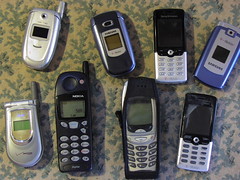
Heard any good ideas lately? How about training rats to sniff out landmines? Or asking cab drivers to gather air pollution data? Or combining mobile phones with gaming to help illiterate children and their parents learn to read?
Attending the
Skoll World Forum on Social Entrepreneurship in Oxford last week, I was struck by both the ingenuity of world-changing ideas and the urgency to get more good work accomplished—and fast. From global warming to health pandemics to pending water shortages, the world’s problems aren’t about to go away on their own.
Among the highlights were keynotes by former President Jimmy Carter and former Vice President Al Gore, both Nobel laureates. President Carter showed us what optimism looks like at age 83 as he talked about his quest to eradicate waterborne illnesses that disproportionately affect the poor and the young. Vice President Gore explained why his relentless quest to end global warming is now focusing close to home. “To convince the world as a whole to act in time,” he said, “first we have to convince the U.S.”
Dr. Paul Farmer, founder of
Partners in Health and subject of Tracy Kidder’s
Mountains Beyond Mountains, is another social entrepreneur who has no time to waste. He has devoted his life to bringing quality health care to the poor, first in Haiti and now in Rwanda, Peru, and elsewhere around the world. This means delivering “goods and services that should be rights,” he argued in a firebrand address, “not commodities.”
This was the fifth-annual conference about a field that is still in its infancy.
Social entrepreneurship harnesses strategies more often found in the business sector to solve social and environmental problems. Many who practice in this arena like to talk about “silo busting,” or breaking out of narrow ways of thinking about problems. They often pull from disparate fields to come up with new ideas. Sometimes, they even reach over into the “silo” of education to effect change.
For example, much of India suffers from alternating cycles of torrential rain and drought. It’s also a place where poverty and illiteracy are generational. Bunker Roy, an engineer by training, decided to build underground tanks to collect rainwater during the wet season. Then he built village schools atop the water tanks. Children who were previously not enrolled in school began attending so that they could drink what Roy calls “sweet water.” This was the start of an idea that has blossomed into
Barefoot College, a rural development effort that connects villagers with practical knowledge to improve their own lives.
Social entrepreneurs and their big ideas offer the world such hope that some researchers have made a study of their defining qualities. Not surprisingly, they tend to be risk takers and innovators. They often react with righteous indignation when they encounter injustice. But they are also stubborn optimists. Don’t these sound like qualities you want to nurture in your students as you prepare them to become global citizens?
I’ll share more highlights from the Skoll World Forum, both here and on the
Spiral Notebook blog, in coming days. You can also find video clips from the conference at the
Social Edge blog. For classroom-ready videos and unit plans about this field, take a look at
The New Heroes PBS series (full disclosure: I helped to develop the online materials for educators). And if you’re still wondering about those mine-sniffing rats and other ideas that kicked off this post, take a look at:
Herorats and
MobileActive.
 Please join us in a conversation about the essential learning functions technology can deliver to support any learning enterprise, and especially project-based learning. We will be hosting a Classroom 2.0 Live! Webinar, Essential Learning with Digital Tools, the Internet and Web 2.0, on Wednesday, April 30, at 5:00 PDST. Read more about the session and download a document we'll be discussing here.
Please join us in a conversation about the essential learning functions technology can deliver to support any learning enterprise, and especially project-based learning. We will be hosting a Classroom 2.0 Live! Webinar, Essential Learning with Digital Tools, the Internet and Web 2.0, on Wednesday, April 30, at 5:00 PDST. Read more about the session and download a document we'll be discussing here.





